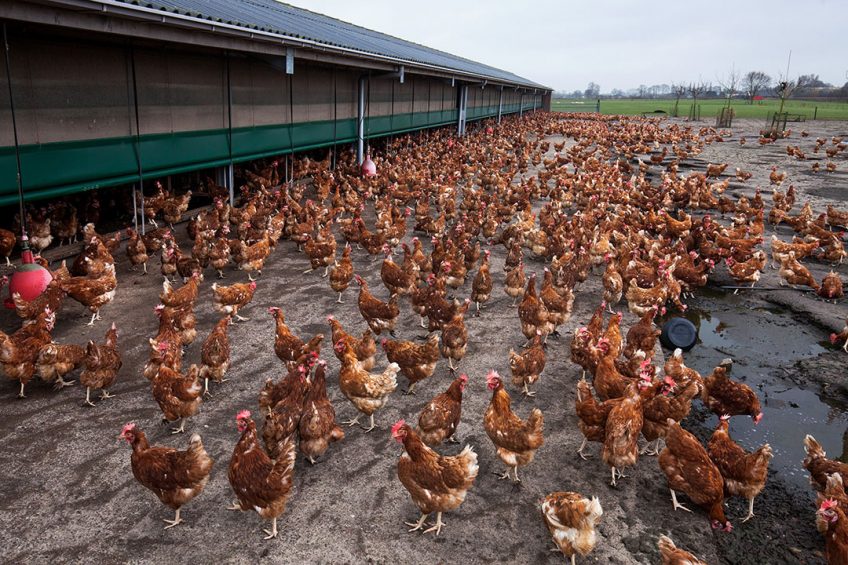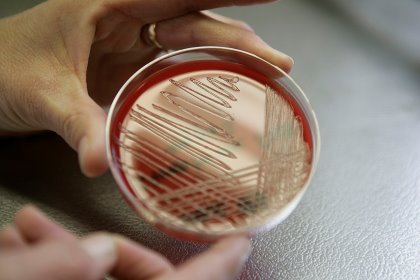Designer vaccines for free range poultry

Preventative veterinary care is gaining in importance, but vaccinations offer no panacea. That said, farm-specific inoculations are becoming more mainstream. Autovaccines, tailored per farm, can provide a solution to the many different E. coli strains, erysipeloid and Pasteurella on free range farms.
The changing methods for keeping poultry, from cage and aviary to free range, paired with more efficiently bred hens with intact beaks, provides a breeding ground for disease on laying hen farms. The more stressors, the more sensitive the birds are to pathogens. ‘Forgotten’ diseases may reappear, infections that are difficult to control with commercial vaccines. A specific farm vaccine, also known as an autovaccine or farm-specific inoculation, may offer poultry famers a potential solution. This will only be successful in close consultation with the farm vet.
“The big advantage of an autovaccine is that it contains a farm-specific pathogen that protects birds against a specific disease at the farm that cannot be entirely combated with a standard vaccine,” says Marcel Boereboom. The Dutch veterinarian has seen an increase in the use of autovaccines in recent years, in part due to more intensive veterinary assistance on poultry farms.
The more we look into specific farm diseases, the better we are able to tailor the vaccine.”
A small number of Dutch companies have specialised in producing farm-specific vaccines. In Germany, 18 companies altogether are involved in this business. The use of autovaccines is commonplace there. Unlike in the Netherlands, certification to produce vaccines is mandatory in Germany, stating the specific animal species and the pathogen concerned.
The use of autovaccines is commonplace in Germany.”
At the vet’s discretion
In the Netherlands, a so called ‘cascade regulation’ applies. Poultry farmers can use an autovaccine in close consultation with their vet if there is no registered vaccine on the market or if the registered vaccine is not effective enough on the farm. Farm-specific vaccines do not have to be registered which means that it remains unknown how many farmers use them and for which types of animals. Further to enquiries among numerous vets Poultry World has learned that there is growing interest in autovaccines in both the Netherlands and Germany. Poultry farmers mostly use autovaccines to treat problems with E. coli infections, erysipeloid and Pasteurella; all diseases that the birds are prone to when they have access to an outdoor range. With this type of production gaining in popularity in these countries, autovaccine use is only expected to grow in the future.

Why use an autovaccine?
In addition to the usual and sometimes mandatory vaccines for viruses such as Newcastle disease, infectious bronchitis and infectious laryngotracheitis, an autovaccine is often used and combined for bacterial pathogens in the rearing period at 12 and 15 weeks of age. The farm-specific vaccines are used mostly on laying hen farms, followed by duck and turkey farms, to protect the next flock against farm-specific pathogens. Autovaccines are used to a lesser extent in breeding on broiler parent stock farms. The E. coli bacterium (that is known to have 200 different strains) represents the largest share of autovaccine production, because there is no registered vaccine available for some strains.
Jeroen Leus, poultry vet with Demetris in the east of the Netherlands, regularly has an autovaccine produced for his clients. Unfortunately, in addition to E. coli problems, he sees Pasteurella or erysipeloid outbreaks almost every month, especially in organic or free-range chickens. Leus indicates that assessing autovaccines is still in its early stages.
The effect of a bacterial inoculation can only be measured by seeing fewer or more clinical problems in the next flock.”
Production process for autovaccines
One company that has been producing autovaccines for the Dutch market since 2013 is Dopharma. Dopharma vet Kim van Dinther assists poultry vets with farm-specific vaccines. “Of all the autovaccines we produce for poultry farms, 70% have an E. coli pathogen,” she says. For both erysipeloid and Pasteurella, the rates vary between 5% and 10%. The production process for autovaccines is very specific. “The more meticulous the diagnostics, the more chance of achieving a proper vaccine effect,” says Dinther. Farm vets do most of the diagnostics. They supply the isolate, the specific colony, or colonies of bacteria, which is then further analysed in the lab. Producing an autovaccine from a bacterial pathogen usually takes anywhere from 4 to 6 weeks, while a registered vaccine is often immediately available from stock. While the development of a registered vaccine can take years because of company and legal requirements surrounding both effectivity and safety.

Application
For autovaccines, the pathogens are multiplied on gels in the lab until the desired number of doses is reached. The bacteria are then harvested and killed off. An autovaccine is always ‘dead’. After that, the pathogens are mixed with an adjuvant. This is a solvent that increases the vaccine’s effectiveness and influences the immunity period.
We use 2 types of adjuvants for poultry,” Van Dinther explains. “One has an oil base and the other has an aluminium hydroxide base,”
Oil provides a stronger immune reaction than aluminium hydroxide but can also cause more inoculation reactions, such as vaccine spots. The farmer and the vet decide on which adjuvant to choose, which mostly depends on when the problems occur. When the vaccine is ready, a quality control is carried out and a small number of birds get a test vaccination before it is applied to the whole flock.
Autovaccine cost
It is estimated that 10-20% of regular hens and almost all free-range hens receive a farm-specific vaccine. The cost depends on the pathogen, the adjuvant, the number of doses and the number of different pathogens and varies between € 70 and € 300 per 1,000 doses. The additional cost per hen is estimated at about € 0.10 when the inoculation is done at the same time as the regular ones. Cost is not an issue, but there are some concerns. The veterinarians involved take the view that an autovaccine should not be used as a standard preventative measure. It should only be used further to frequent bacteriological investigation to determine whether a vaccine is needed and which it should be. Preferably, a vaccine tailored to the situation.
No unity in European regulation
The various countries in the European Union have different rules and regulations when it comes to autovaccines. Each nation decides for itself whether to allow autovaccines, with or without the need for due process. To change this the European Union has proposed a Regulation on veterinary medicines that will take effect in 2022. With this new Regulation the EU aims to regulate more closely the production and use of autovaccines. Several autovaccine producers from 10 counties have united in the Association of European Manufacturers of Autogenous Vaccines and Sera (www.emav.be) to provide input for the implementation of this new European legislation. Among them are Ripac, where the autovaccine production for Dopharma takes place, and Vaxxinova.
Author: Judith Waninge













